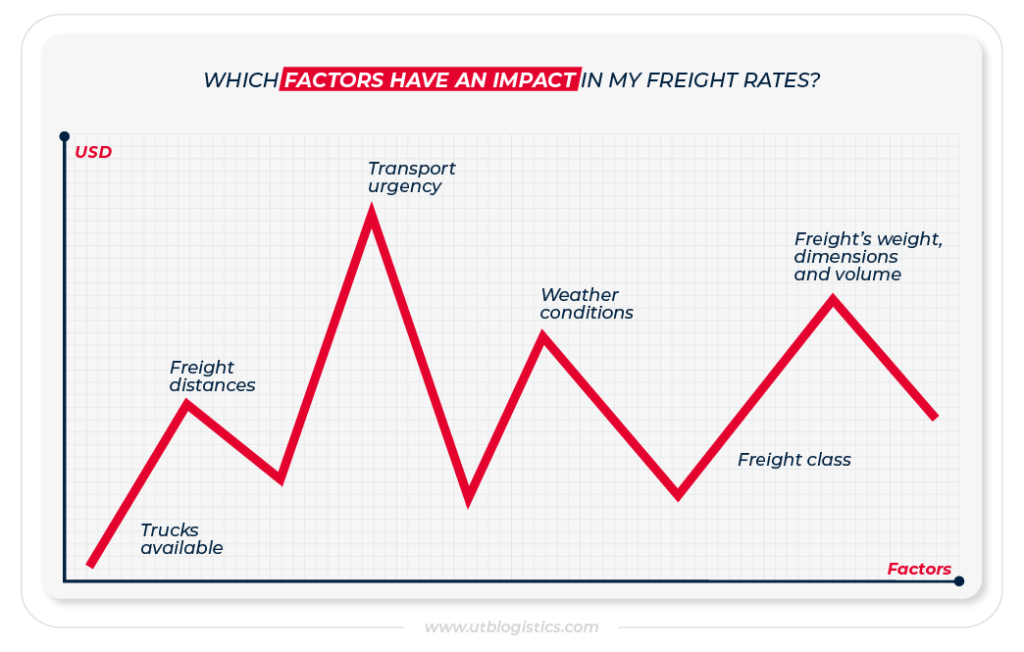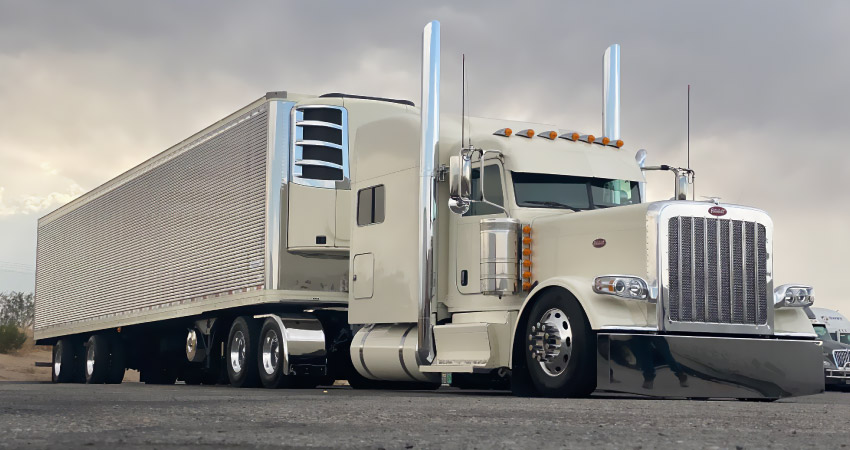

A trucking rate represents the cost your company must pay to transport any product from one place to another by truck. You’ve probably asked yourself more than once: How does the market move, and how does my logistics and transportation provider help me find the best prices to distribute my products? Let’s explore the key factors to consider when receiving a trucking quote.
What determines a freight trucking rate?

We are sure that one of the most common topics of conversation at your meeting table is the freight rates you must assume for distributing your products in new territories. When planning the shipment of your products, having a logistics and transportation provider to advise you on the type of service you require is critical. In addition to having a vast network of drivers and receiving professional guidance to choose the kind of truck that best suits your specific requirements, it guarantees to optimize your logistics operations to generate efficiencies in your business.
To understand what factors influence freight rates, it’s necessary to analyze in detail aspects such as transport distance, type of cargo, weight, delivery conditions, special requirements (such as handling or care of the goods), fuel costs, necessary accessories and availability of equipment on specific routes. Each element significantly impacts the final transportation price, so it is important to specify them carefully when requesting a quote.
Here we review one by one:
- Availability:
Let’s suppose you need to move a large quantity of lemons in a refrigerated truck to preserve their integrity. To do so, it’s essential that you contact your logistics provider, who is responsible for giving you the ideal temperature to transport your cargo and other specifications so that your lemons are moved in the best conditions. However, a challenge arises: How many refrigerated trucks are available in your area? How many of them go to the same destination as your product, and is the price of their transportation aligned with the market average?
This situation can result in higher quotes, especially when there is a high demand for similar loads looking for the same specialized trucks that your company requires but little availability of vehicles to carry out the transportation. Therefore, it’s crucial to have a logistics partner with the expertise, transportation network, and logistics solutions to ship your products.
- Urgency:
When you’re faced with a large number of orders and a tight schedule for their transportation, you are likely to incur significant monetary losses due to the urgency of finding who will cover your service. To avoid this scenario and ensure efficient distribution of your products, it is important to ensure dedicated planning for the projected capacity of your deliveries. This pre-planning is especially crucial in the work of a logistics partner.
With a work plan in place, your logistics and transportation providers can guarantee the best rates and effectively coordinate the transportation and delivery of cargo, allowing you to minimize costs and inconveniences associated with urgent situations.
- Distance:
The distance or miles to be traveled is a significant factor that influences transportation rates, as well as the areas to be transited, their safety, accessibility, and the journey’s difficulties. Therefore, the distance, location, place, and route combination influence the preliminary quotation for the transportation service.
- Climate:
The seasons of the year and climatic conditions make it necessary to handle products uniquely so that they do not deteriorate, preserve their integrity, and arrive in the best conditions. In situations like these, whoever has more experience and knowledge will be in a better position to solve adversities and will be able to guarantee their clients an ideal transit time, punctuality, efficiency, and, therefore, a better profit margin.
- Cargo weight, dimensions, or volume:
Cargo weight, dimensions or volume often influence logistics costs. Hefty, oversized, or unusually shaped cargo will require special handling, which will require specialized management capable of guaranteeing the conditions of its transport. In addition, this type of cargo may be subject to special permits or specific transport regulations, which adds value to the knowledge that a logistics and transportation provider can give. On the other hand, lighter and less damage-prone cargoes are less complex, which makes them more commercial, and generally require less specialized logistics.
LTL or FTL rates for the distribution of my products?
The decision between LTL (Less than Truckload) or FTL (Full Truckload) determines the transportation rate. This decision affects the use of the truck, whether consolidated or dedicated, directly influencing the number of stops made. For example, using LTL, where goods are loaded and unloaded from different customers, can result in flexible transit times and possibly lower rates. In contrast to FTL, where the truck is used exclusively for a single load, the transit time is more efficient and direct, which leads to a higher cost.
How does freight classification influence your freight rate?
The NMFC (National Motor Freight Classification) freight classification is a system used in the United States to categorize different types of commodities to determine applicable freight rates. This system assigns a numerical classification code to each type of cargo based on its density, handling, fragility, and other factors relevant to transportation.
The NMFC divides cargo into classes ranging from Class 50 to Class 500, and each class has its own characteristics and associated rates. Goods that are easier to handle and less susceptible to damage tend to have a lower classification and, therefore, lower rates, as they require less care and a low level of expertise, while bulkier, heavier, or more delicate goods may have a higher classification and require more effort to transport safely.
Freight forwarders use this classification to determine the cost of the shipment and ensure a fair and equitable rate for the transportation of different types of goods.
In conclusion,
Knowing the factors influencing freight rates is crucial for decision-making and choosing your logistics and transportation provider. At Coal Port Logistics LLC, we provide personalized advice to small, medium, and large companies that want to expand their market share and conquer new territories. Remember that the restricted availability of a logistics network influences you to find higher transportation rates. A logistics provider with a vast network of contacts, experience, and, above all, knowledge will facilitate the negotiation of rates for transporting your products. Get in touch with us through dispatch@coalportlogistics.us














